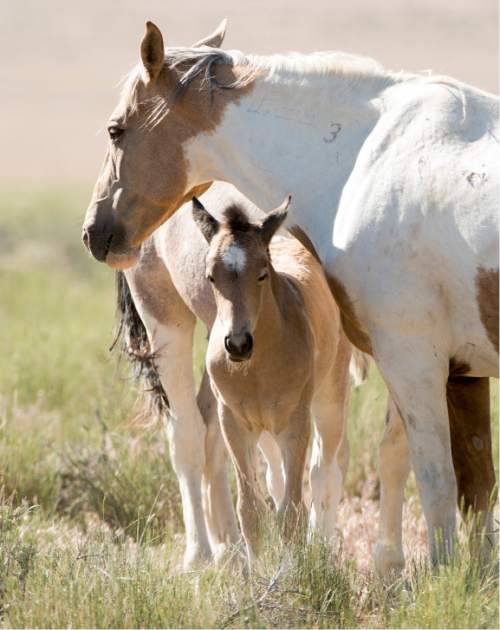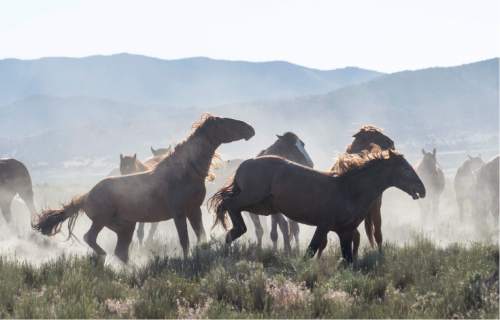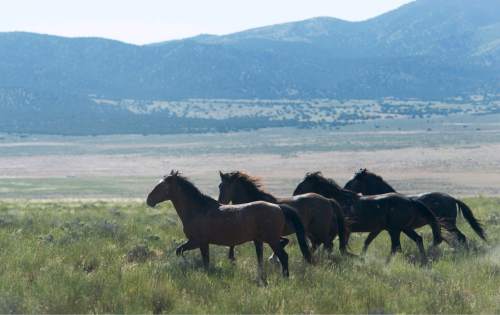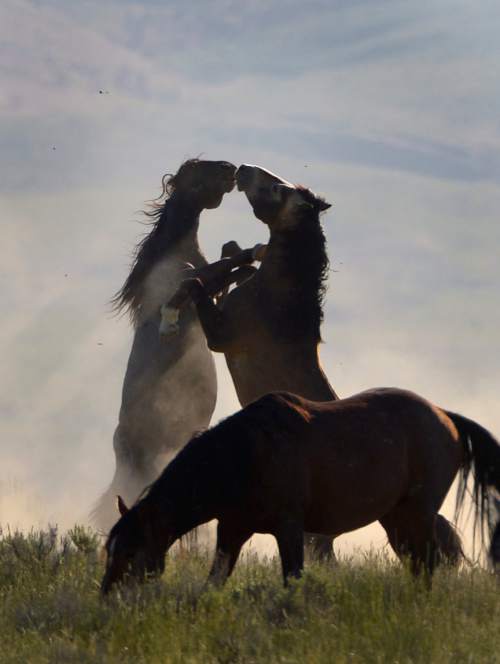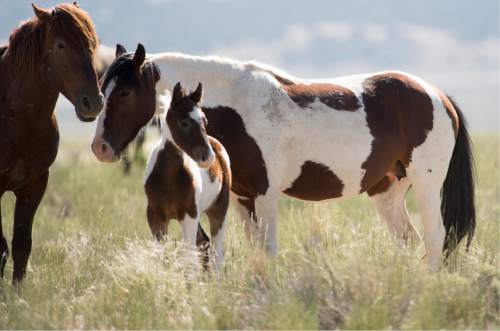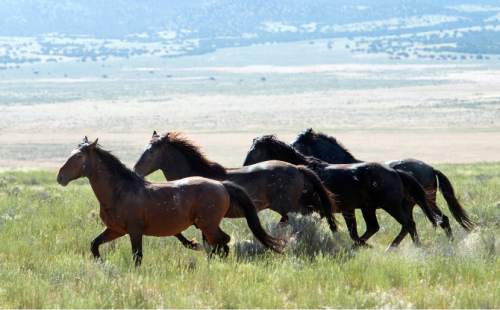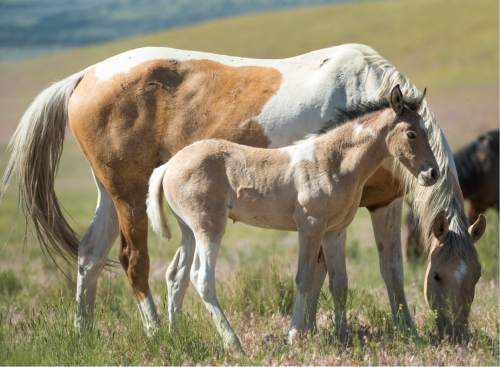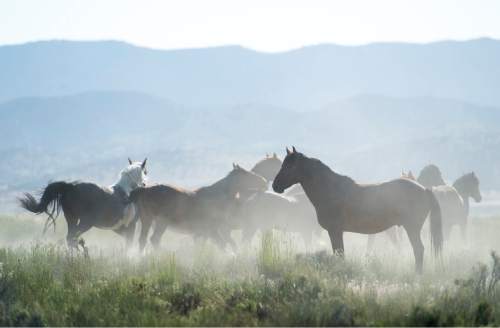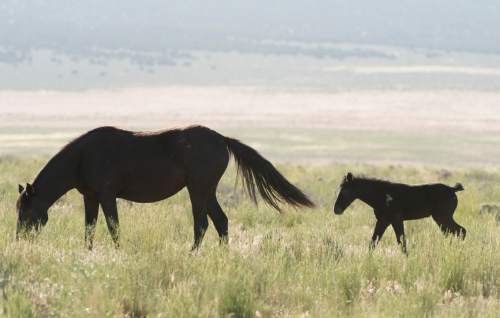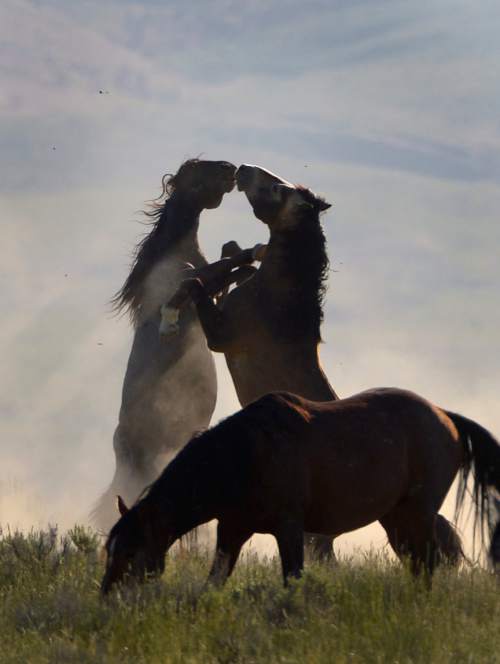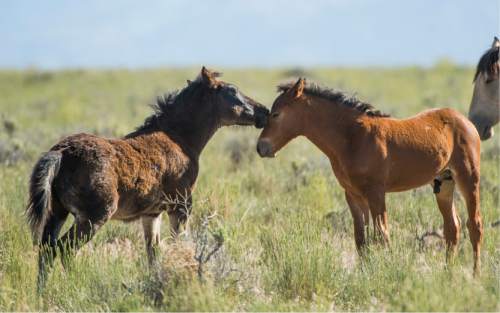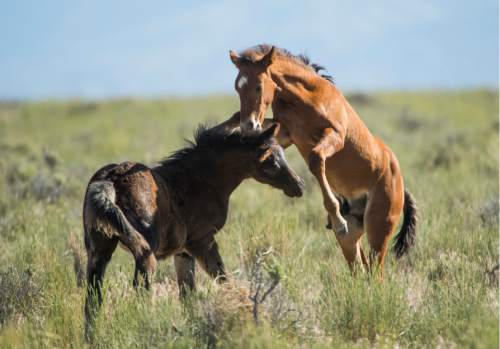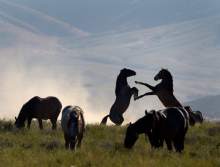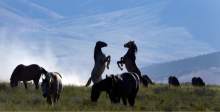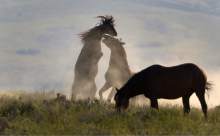This is an archived article that was published on sltrib.com in 2015, and information in the article may be outdated. It is provided only for personal research purposes and may not be reprinted.
Later this month, the Bureau of Land Management will begin administering contraceptives to free-roaming mares in Tooele County, this time using dart guns to avoid rounding up these wild horses.
Horse proliferation across the Western range is among the most vexing challenges facing the federal land agency, which is obligated under federal law to both protect the animals but also ensure forage remains available for public-lands grazers.
Contraception is viewed as a promising alternative to the usual practice of rounding up excess horses, which has largely been panned as a costly failure. Few horses are adopted and thousands will spend the remainder of their lives in corrals. Meanwhile, free-roaming horse populations grow, putting pressure on a range already depleted by drought and cattle.
In a decision released Friday, BLM's Utah office will administer the contraceptive Porcine Zona Pellucida, or PZP, with darts to mares roaming the Onaqui Mountain Herd Management Area, a 207,000-acre patch of public land 60 miles southwest of Tooele. It currently is home to 317 wild horses, far above what BLM has determined to be an "appropriate management level."
This drug has been shown to keep mares from becoming pregnant for a year or two, and then it must be re-administered. PZP has to be carefully handled or it won't work.
"The darting is being conducted to meet local and national goals of slowing population growth, reduce the number of animals in short-term and long-term holding, and maintain a thriving, natural ecological balance and multiple-use relationship on public lands in the Onaqui Mountain HMA," the agency said in a release Friday.
This herd is by the far the easiest to approach of Utah's 19 wild horse herds. Most scatter when a person comes within half a mile, making the use of dart guns all but impossible. The five-year Onaqui project aims to reduce the herd size by half to 160-175 adults. If mares cannot be approached, BLM will use non-trap bait stations to lure them to a place where they can be darted.
Whether contraception can resolve long-standing conflicts over federal land management remains to be seen. Ranchers and state officials want more horses removed from the range, while animal-welfare advocates want an end to the roundups, usually conducted with helicopters.
But the horse-advocacy community is bitterly divided over use of contraceptives. Agreeing with a recent report by the National Academy of Sciences, mainstream groups hope contraception can enable wild horses' peaceful co-existence with ranchers. Other groups, such as Friends of Animals, see contraception as inhumane.
The West's wild horses descended from domesticated horses turned loose centuries ago. Without any predators to control their numbers, herd sizes can double every four to six years, according to BLM.


